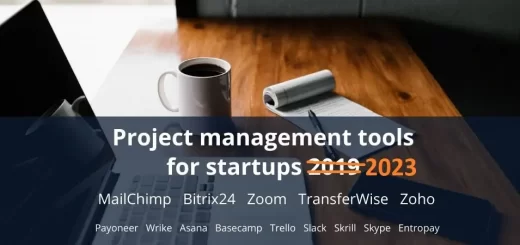Writing an Efficient Resource Breakdown Structure (RBS) for Your Project

Planning a project which properly utilizes available resources can be difficult, no matter how experienced you are as a project manager. Depending on the scale, deadline, and available resources, you might have trouble delivering good results without a Resource Breakdown Structure (RBS).
As its name suggests, a resource breakdown structure revolves around “breaking down” all available resources, from manpower to equipment, before you work on the project.
Writing and implementing an RBS can be useful regardless of whether you work in IT, eCommerce, retail, or another industry with frequent project development.
But how do you write an efficient and applicable RBS for your specific project without missing the mark or losing too much precious time? What are the benefits of using a resource breakdown structure, and how can it improve your workflow going forward?
What is a Resource Breakdown Structure All About?
Let’s tackle the fundamentals of resource breakdown structures before we get down to writing one for your project. As we’ve mentioned:
RBS is a tool which can be used to better manage a project regardless of its scale or end-goals. It typically takes the form of a spreadsheet or a grid which cascades from top to bottom and offers a clear overview of available resources.
RBS is most commonly written by the project lead with full access to available resources, manpower, and equipment as well as deliverable requirements. Once written, it is distributed to all stakeholders (team members, developers, etc.) so that everyone is on the same page about the project. While simple in its concept, a resource breakdown structure requires patience from its writer and project lead. It is a very useful means to an end, especially under strict deadlines, budgets, or available manpower.
Writing a Resource Breakdown Structure the Right Way

source: ibm.com
#1. List Your Available Resources
First up, you should list all of your available resources by writing them down in a notebook or simple text document. You can make the future steps easier by organizing resources into distinct categories from the start. Some of the resource breakdown structure categories you should use in your project planning include:
- People
- Materials
- Equipment
- Budget
- Facilities
- Milestones
These categories are not set in stone, and you should adjust them to your business’ needs. However, they will make the initial audit of your company and available resources much faster and easier to handle. The categories revolving around budget and deadlines should be taken into extra consideration since they can make or break your project.
Remember – a resource breakdown structure is only a shell for your own resources. It will only be as helpful to your project management as the information you collect prior to writing one.
#2. Choose Reliable Writing Tools
Once that’s done, you should choose the tool stack you will use going forward. Your tool stack is an integral part of writing and editing the resource breakdown structure as the project moves along.
Writing tools such as Grammarly and Hemingway Editor are ideal for creating a uniform vocabulary and terminology for your project. Using Evernote might be a good idea in order to set up a basic resource breakdown structure in writing before you turn it into a grid.
Speaking of grids, you can rely on Google Docs and its spreadsheets to create the network of available resources once you gather all the information. Likewise, visual-based tools such as Canva can be used to turn your RBS into bite-sized presentations for quick reference during the project’s workflow. At the end of the day, tried-and-true sticky notes and a blackboard should also be present in your office to allow for free flow writing.
#3. Arrange Resources as Cascades
An easy way to understand how a proper resource breakdown structure should look like is to imagine a waterfall or a row of dominoes. The very top of your resource chain is reserved for the aforementioned categories we collected data on in the beginning.
Let’s take manpower as an example. Under manpower, you can add different job titles of your team members, departments you will collaborate with, or even third-party outsourcing agencies. Once you’ve collected information on available resources and have chosen your writing tools, you can proceed to create the RBS.
Write your resources down into cascades, top to bottom, and arrange the information based on its importance to your project. When you have the “waterfalls” written, it will be easy to track which person is working on which part of the project using which resources.
Before you present the structure to your team, you can fill out any bottlenecks still present in the structure. Given that you have a clear overview of available resources now, you will be able to spot potential project development issues more clearly. That is the truest and simplest practical application of a resource breakdown structure under corporate project development circumstances.
#4. Implement the RBS
Once you write the RBS for your project, you should consult your team members and other executives on possible updates before implementation. While your job as the project lead is to write the structure, you should absolutely ask for second opinions before production begins. Once you finalize the resource breakdown structure, make sure that it is actually used for moment-to-moment workflow.
A common mistake which rears its head during production is that RBS is used primarily in the planning stages. Once production begins, teams often forget to reference or update the structure at all. Organize a team meeting with everyone involved in the project and discuss the workflow going forward. You can define SMART goals and track your progress through a project management app such as Trello or Asana in tandem with RBS. Make sure that the resource breakdown structure is used to its fullest potential, and the outcome of your project will be that much better.
Why You Should Write a Resource Breakdown Structure

To summarize what we’ve discussed so far, let’s take a dive into “why” a resource breakdown structure should absolutely find its way into your workflow. As we’ve mentioned, the role of RBS is to identify, segment, and help implement all available resources during a project’s development cycle.
Given its flexibility, a resource breakdown structure can be used in various industries and scales, making it a must for any modern corporate environment.
If we were to break down the concrete benefits of writing and using the information in a resource breakdown structure, the list would include:
- Clear overview of resources, manpower, and goals during production
- More informed and focused decision-making for project leads and developers
- Streamlined goal-tracking and prioritization of tasks based on available resources
- Easier and more informative post-production analysis for future RBS improvement
- Higher end-product quality and client satisfaction due to the production being within budget
Smart Resource Utilization (Conclusion)
While it only represents the starting phase of project development, writing a proper resource breakdown structure can effectively transform the way you develop in-house projects. It is a smart, efficient, and sustainable resource management model which can easily be scaled and modified depending on your needs.
Make sure to do a proper audit of available resources before you write and choose proper writing tools for the job before jumping into it. If done correctly, you will be able to do more in less time and use fewer resources than before, thanks to smarter resource utilization.














